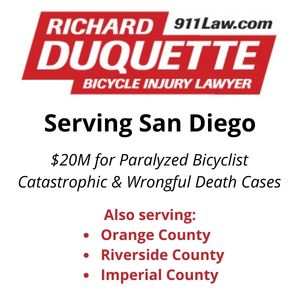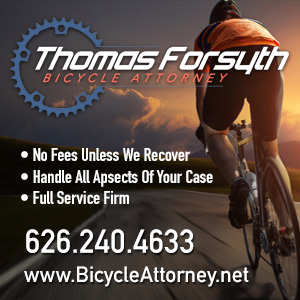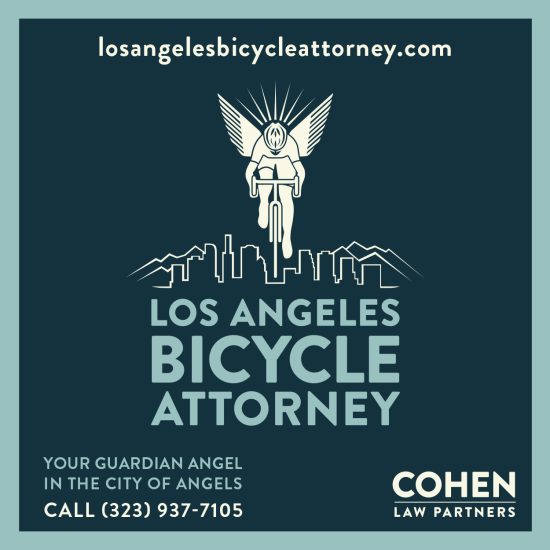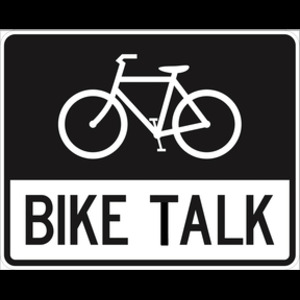Yesterday, I received an email from a man who had moved with his wife from Portland to South Pasadena.
They had chosen South Pas, at least in part, because it appeared to offer the most rideable streets in the area. Yet in less than a year, he’d suffered two minor right hook collisions.
His point was that riding in the L.A. area is a completely different experience than riding in Portland. And that local communities need to do more to make other forms of transportation besides motor vehicles a priority.
He’s right.
While South Pasadena has recognized the problem, and is actually doing something about it, a lot more has to be done throughout the county to make cycling safer for every rider.
Though not everyone seems to be getting that message.
The LACBC affiliate chapter BikeSGV reports that the Arcadia City Council decided this week not to develop a bike plan — in part because the city’s Mayor Pro Tem doesn’t think bikes are a legitimate form of transportation.
Vincent Chang
Just got back from a disappointing Arcadia City council meeting where Mayor Pro Tem Robert C. Harbicht took the lead to nix a contract with a bike plan consultant to prepare a bike plan for the city. Unfortunately, the rest of the council, including the Mayor (who established a city “mayors bike ride”) went along. Harbict stated he had concerns about federal funding for bike access in general as he didn’t believe cycling can be a legitimate form of alternate transportation. Ironically, both Harbicht and the Mayor claims to be avid cyclists.
I don’t know whether that reflects ignorance of the potential utility of their preferred form of recreation, or the dangers of riding in their own city.
Either way, they’ve failed the residents of their city by denying them the opportunity to ride in greater convenience and safety, whether for recreation or safety.
Then again, the problem could be that they’re “avid” cyclists, as some — though not all — Vehicular Cyclists actively oppose the sort of infrastructure preferred by the overwhelming majority of riders.
They believe that every rider — even the most unskilled, slow or risk-conscious cyclist — is safer riding in the traffic lane ahead of oncoming, often high speed, vehicles than in a separate lane devoted to bikes.
In fact, John Forester, the father of the VC movement, recently commented on the New York Times website that “nobody has yet “create[d] safe bike lanes”; we don’t know how to do it.”
I think many riders in the Netherlands — and even in New York — would beg to differ.
It’s a battle that rages on in cities and states throughout the country. Like in San Diego, where Forester himself helps lead the fight against more and better bike lanes, much to the chagrin of more mainstream riders.
Despite denials from VC adherents, there have been numerous studies that show well-designed bike lanes can improve safety for everyone. Not just cyclists.
Meanwhile, I have yet to see a single credible study that supports the oft-repeated argument that cyclists are safer riding in traffic than in a good bike lane.
Which is not to say there aren’t a lot of bad ones out there.
Maybe that’s because, like Forester, they refuse to believe such things exist. Sort of like another group that denies compelling scientific evidence.
But it does raise a question another rider brought up awhile back, when he asked for my advice on whether it was better to ride a busy street with a bike lane or a quieter backstreet route with no bike infrastructure.
And the sad answer I gave him was that there is no such thing as a safe street for cyclists.
Depending on your perspective, both present their own unique set of dangers.
On a busy street, you have the risk of high speed traffic and an unacceptably high rate of careless and/or distracted drivers. Along with the near-constant risk of doorings, right hooks and left crosses, as well as drivers who consider the bike lane another motor vehicle through lane, or maybe a parking lane.
Meanwhile, riders on backstreets risk drivers backing out of driveways without looking, children and dogs running out into the roadway without warning, and drivers who don’t even consider the possibility of bikes on their bucolic byways.
Even on country roads, where I did some of my most enjoyable riding in my pre-L.A. days, you might not see a car for hours. But there are still dangers posed by truck drivers and farm equipment operators who assume there’s no one else there, and speeding teenagers out for a joyride — sometimes tossing their empties at any unfortunate victim they happen to pass.
And yes, I speak from experience.
And don’t get me started on the ubiquitous risk of potholes and otherwise dangerous road surfaces and designs. Or the unique thrill presented by riding past bears or gators.
Or bees.
That’s not to say bicycling is dangerous.
It’s not.
But it does demand a constant awareness of your surroundings, as well as a focus on defensive riding by anticipating the dangerous presented by your current environment, wherever you happen to be. And being prepared to respond to risks before they arise.
That doesn’t mean that drivers and other in the road aren’t responsible for using it safely. But it’s your life that’s on the line, and you can’t count on them to focus on your safety. Or even know you’re there.
Or care, for that matter.
That point that was driven home the other day on the quiet residential streets of my own neighborhood, as I made my way through the last few blocks at the end of an otherwise enjoyable ride.
I’d just stopped for a stop sign, and was beginning to resume my route across the intersection when an SUV came up on the cross street. The woman behind the wheel looked directly at me, then gunned her engine just as I was about to pass in front of her, cutting right onto the road I was riding on.
Fortunately, I was prepared, anticipating that the driver might run the stop sign — though not that she would attempt to hit me in the process. I was able to swing out onto the wrong side of the road, allowing her to screech past me and race off into the distance.
Yet as so often happens, I caught up to her at the next red light.
So I asked, as politely as I could under the circumstances, with fear and anger and adrenalin coursing through my body, why she’d just tried to run me over.
Her response?
“Cyclists have to stop at stop signs too!”
Never mind that I had already stopped before she ever got to the corner, while I was still the only one at the intersection. Or the irony that she ran a stop sign in her attempt to run me down.
In her mind, she was entitled to enforce traffic laws with the bumper of her car. Just another driveway vigilante using brute force to intimidate, if not injure, another human being.
Fortunately, I’m not so easily intimidated.
I would have loved to continue the conversation, but she quickly cut from the left turn lane she was in to make a quick right in front of high-speed traffic in order to get away from me.
Evidently, I scared her, even though she was the one wrapped in several tons of steel and glass. And I wasn’t the one who’d just tried to attack someone.
Though I did break my Lenten vow to not swear at drivers, however much they might deserve it; risking eternal damnation for the momentary relief of releasing my anger verbally before I exploded into a thousand spandex-clad pieces.
As usually happens in such cases, I didn’t have time to get her license or a good description of her car. And even if I had, there were no witnesses, so there’s nothing the police could have done anyway.
The really scary thing, though, is that the residential nature of the street she was on means that she’s likely to live here herself. Which means that she’s probably one of my neighbors, and there’s a high probability I could run into her again.
Whether either of us will recognize the other is a good question. As is what would happen if one of us does.
Where you prefer to ride is a matter of your own comfort level. Whether that leads you to ride vehicularly in a busy traffic lane, in various bikeways or on quieter bike streets that seldom see another road user, on two wheels or four.
But it’s a good reminder that no matter how peaceful they may look, there are no safe streets.
Even the ones in your own neighborhood.
Thanks to everyone who forwarded me the link to the San Diego KPBS story.
Update: Oddly — or maybe not so oddly, given the KPBS story — Bike Snob wrote Vehicular Cycling today, as well. And as usual, he’s much funnier than I am.
Like this:
Like Loading...











